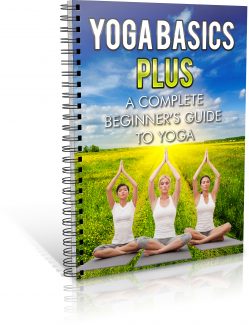
 License Type: Master Resell Rights
License Type: Master Resell Rights  File Type: ZIP
File Type: ZIP
 SKU: 62172
SKU: 62172  Shipping: Online Download
Shipping: Online Download
Sample Content Preview
Introduction
As we march into this bright new millennium, we’re constantly reminded of the fusion of east and west. Whether it’s through satellite television programming that beams in productions from different cultures, enjoying books and music from distant lands that, only a generation or two ago, couldn’t be accessed, and – of course – communicating with people across time and space through the Internet and other telecommunications advancements, the world has become a much smaller place. Indeed, when Marshall McLuan coined the term Global Village, even he probably didn’t envision so much, so fast, so soon.
Riding the wave of information that now crisscrosses our tiny planet is something that has its roots in ancient history, yet is experiencing a blossoming in the west that continues to gain momentum with each passing year. Whether it’s at a local YMCA or a lush spiritual retreat in the Everglades, Yoga is establishing itself as a mainstay in western culture; indeed, in global culture.
However, many people are reluctant to experience the physical, emotional, and psychological health benefits of yoga; and there is really only one major reason for this: misinformation.
While many people might truly enjoy yoga and find it to be the side-effect free answer to a lot of their emotional and physical ailments, they just don’t know enough about the subject to take that first step.
Furthermore, a stereotype out there that seems to persist despite evidence to the contrary is that yoga is a religious following; and that to experience its many health benefits somehow obliges one to renounce their faith or, worse, run away to some commune and eat tofu in between chanting sessions.
While, yes, if you’d like to go to a retreat and enjoy tofu and chanting, that’s probably possible (almost anything is possible, as long as it’s legal and people want to do it, right?).
Yet that vision of yoga – people with shaved heads and handing flowers to strangers at the airport – is by no means the overall picture. Yoga is really a very simple, accessible, and in many countries around the world, ordinary thing to do.
In that light, this book is created with one goal in mind: to demystify yoga for you, and provide you with a clear, simple, and fun introduction to the topic.
If you’ve never been exposed to any kind of yoga (except for what you might have seen on television), then this book is for you!
In addition, even if you have experienced some kinds of yoga (perhaps a friend dragged you to a class at the local recreation center all those years ago), this book will reignite your interest in the topic and reattach you to a mode of body movement and mind focus that has lived in ancient lands for millennium.
This book is conveniently organized into four sections:
- What is Yoga?
- Why is Yoga Beneficial?
- Different Kinds of Yoga
- Yoga Equipment & Accessories
As you read through these sections, please bear in mind that there is absolutely no attempt here, directly or indirectly (or in any other way possible!) to endorse or promote any religious view. This is because the view of this book is same view that is held by the world’s foremost authorities on yoga: that it is not a religion. It does not have a dogma.
While there are indeed different schools and streams of yoga – there are actually thousands of them – they have all managed to coexist quite peacefully because, for the most part, yoga is not evangelical, which simply means that it does not seek to spread itself as part of its mission.
Please note that the statement above in no way criticizes or comments on evangelical orders, such as Evangelical Christianity; the point here is simply that the overwhelming majority of yoga movements does not consider spreading yoga to be a tenet of its identity.
Yet, while the yoga that is described in this book (and experienced in most of the world) is not a religion, it does very seamlessly fit into many people’s existing religious framework.
In other words, if you are a Catholic, a Protestant, a Muslim, a Jew, a Sikh, or anything else and identify yourself as being a part of any faith at all, yoga doesn’t ask you to replace that faith with someone else, or offer you a competing or contradictory view of what you already believe.
So please remember: yoga, as it is discussed and promoted in this book (and in virtually every book worth reading!) is not a religion.
As we’ll begin to understand in the next section of this book, yoga is really nothing more, and nothing less, than harassing the power of human attention, and using it to benefit the body and mind. It is an approach to life, here and now.
What is Yoga?
What was I looking for that night in Bombay? The same thing I had been looking for as long as I can remember. The same thing all of us seek in one way or another. The “answer” to life, whatever that might mean. The “truth.” The reason for living, dying, or being “here” at all.” - Beryl Bender Birch
Yoga can seem like a complicated concept; or, at the very least, a dizzying array of physical manipulations that turn seemingly happy-looking human beings into happy looking human pretzels.
Or even more disconcerting, as we have alluded to in the Introduction, a stereotype does exist in places where the term yoga is synonymous with cult, or some kind of archaic spiritual belief that compels one to quit their job, sell their house, and go live in the middle of nowhere.
In actual fact, Yoga is a very basic thing; and if you’ve had the opportunity to visit a country where it has been established for generations – India, Japan, China, and others – it’s really rather, well, ordinary.
The practice of yoga came to the west back in 1893 when one of India’s celebrated gurus, Swami Vivekananda, was welcomed at the World Fair in Chicago. He is now known for having sparked the West’s interest in yoga.
Literally, the word yoga comes from the Sanskrit term Yug, which means: “to yoke, bind, join, or direct one’s attention”. At the same time, yoga can also imply concepts such as fusion, union, and discipline.
The sacred scriptures of Hinduism (an ancient belief system from India that has a global presence) also defines yoga as “unitive discipline”; the kind of discipline that, according to experts Georg Feuerstein and Stephan Bodian in their book Living Yoga, leads to inner and outer union, harmony and joy.
In essence, yoga is most commonly understood as conscious living; of tapping into one’s inner potential for happiness (what Sankrit refers to as ananda).
- License: Master Resell Rights
- Category:Ebooks
- Tags:2018 Ebooks Master Resale Rights







